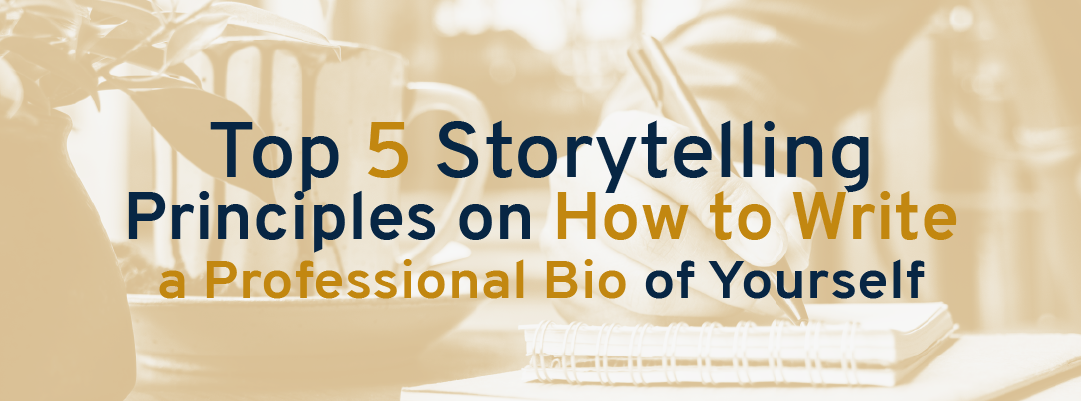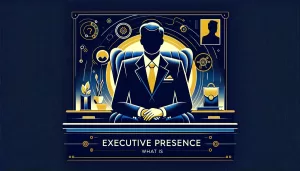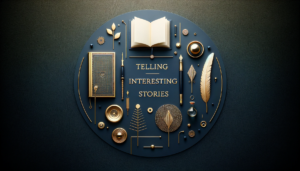All the pieces of content out there that are focused on showing you how to write a professional bio of yourself are similar.
This is what they say:
- A professional bio is a short overview of your experience
- You should include details about education, employment, and achievements
- Make sure to have your name, occupation, skills, and passions
Some highlight that you should tell a story, but they should also share how to actually do that.
No wonder most professional bios out there are not memorable. Because most are following the same guidelines
The first thing you need to understand before deciding what to include in your professional bio is to have a clear picture of your audience and the problem you are solving for them.
After you do that, creating a memorable professional bio that leaves the audience with the impression you want to create about your professional experience will be much easier.
In this article, we will detail how to leverage the five commandments of storytelling so that you can clearly understand how to write a professional bio of yourself that helps you accomplish your professional goals.
Contents
The value of a memorable professional bio
One of the greatest feelings anyone can experience is making a deep connection with someone else.
And before you can make a deep connection, a deep conversation needs to happen.
You feel seen and heard when you share a piece of information with someone, they get interested in the topic, and a great conversation develops.
Ideally, the same should happen with your professional bio.
You should be able to share it in a way that sparks interest and leads to a deeper conversation so that it becomes memorable.
You know how sometimes you meet someone for the first time, and you end up finding that you both have the same favorite book (or movie), talk about weird details that no one else gets, and suddenly you feel like you’ve been friends forever?
A similar reaction can be created when you share your professional stories. A strong professional bio is the key to achieving those meaningful and memorable moments.
Being able to do so can lead to clients, jobs, and overall career growth opportunities.
How to write a professional bio of yourself including the right details?
The best way to understand what to include in a short bio is to think about your audience and the problem you are trying to solve for them.
The main questions that pop up in our brains when we encounter another person are:
- Do they want to hurt or help me?
- Can they execute their intentions?
This is usually the reptilian brain at work, worrying about the short term.
In a professional setting, this translates into:
- What are they promising to help me with? Or are they just trying to sell me something?
- Can they deliver on their promise? Is there any proof?
Once you understand what the person in front of you is trying to accomplish, you can apply relevance filters to share only the important information about your professional career.
Think about these scenarios:
- Your aunt, at a family gathering during the holidays, asks you: “How is work going?”
- Someone from your gym, after weeks of working out together, gets curious about you and asks: “What do you do for a living?”
- Someone at a conference asks you: “So, what’s your story?”
- An interviewer asks you: “Tell me about yourself?”
- A podcast host asks you: “Share with us a bit about your background?”
All of these cases are an invitation to share a professional story. In each of these, career growth opportunities could arise. But only if what comes out of your mouth is a hook for the listener to keep asking questions.
And there is no better way to keep an audience engaged with what you are saying than leveraging storytelling principles.
Where can I use a bio about myself?
If your goal is to elevate your professional profile and start attracting professional growth opportunities, you need a great professional bio.
Here are a few instances in which a great bio is valuable:
- Being introduced at speaking engagements
- Getting invited to be a guest on a podcast
- Landing a feature on a top publication
- About pages on websites
- Professional profiles
A great bio gives your audience a summary of what you bring to the table. It answers these questions that are likely popping up in their heads “why should I care about you” and “how can you help me?”
Also, it gives you a clear blueprint that you can follow when you get asked questions like:
- Can you tell us a bit about yourself?
- Can you share your background?
- What’s your story?
This will allow you to look and sound professional, instead of rambling and trying to put together something on the fly.
All the top thought leaders know their story like the back of their hands and they’ve mastered the delivery so that it always engages the audience whenever they share it.
The Five Commandments of Storytelling
Most stories are composed of several scenes.
And all scenes must include the 5 commandments of storytelling (5Cs). These are:
- The Inciting Incident
- The Turning Point Progressive Complication
- The Crisis
- The Climax
- The Resolution
What follows is how Danielle Kiowski defines the commandments in The Five Commandments of Storytelling, a Story Grid Beat.
The Inciting Incident
The inciting incident is a ball of chaos that spins into the story and knocks the protagonist’s life out of balance.
The Turning Point Progressive Complication
The turning point progressive complication marks the point at which the protagonist’s initial strategy for responding to the inciting incident fails.
It shows that the protagonist’s established cognitive frame, or limited perspective, is not sufficient to deal with the problem proposed by the inciting incident.
The Crisis
The crisis is the dilemma that the protagonist faces as a result of the turning point. It’s a choice between incompatible options.
The Climax
The climax shows the protagonist’s decision when they choose one of the options outlined in the crisis or come up with an alternative option they didn’t reconized before.
The climax both illustrates and proves the changes the protagonist has gone through. This action shows the protagonist acting in a way they were not capable of at the beginning of the story.
The Resolution
The resolution is the payoff of the decision that the protagonist makes in the climax. In this commandment, the protagonist reaps the reward or suffers the consequences of their choices.
This is the return on the investment the reader has made in empathizing with the protagonist and accompanying them on the journey to pursue their objects of desire.
If you’d like to deepen your understanding of the commandments, I’d recommend reading the short book that Danielle wrote on the subject.
Applying the 5Cs to your professional bio
How do you know what to include when learning how to write a professional bio of yourself?
This is the key to a good story. Understanding how to include all the “good parts” and leave out the “boring stuff.”
At first, you might want to think about all the “highlights” or important moments in your career.
Those are likely good scenes.
Then, you can think about some specific moments that could fit the definition of the 5Cs.
Are there moments when you have to make tough decisions that imply tradeoffs? Those are likely crises. The decisions you made were climaxes. And the results, good or bad, are part of the resolution.
One of the most challenging to identify is the inciting incident. But once you have identified others, it’s easier to reverse engineer your way to finding the inciting incident that kicked off different parts of your professional journey.
As you start to identify these moments and depending on how long your career has been, you could start to identify several different big phases. In each of those phases, you will likely have 5Cs.
Then, after you have identified each phase, you can write a long bio for yourself. One that you might not even show to anyone. But from that one, you then select the parts that you can use for each situation.
You get invited as the main guest on a podcast? Maybe you can share the long version of your professional bio in this situation.
You are asked for a short bio to introduce yourself as a speaker? You can maybe pick the most recent phase, including the most important inciting incident overall, and that becomes your introduction.
The key is to create an exhaustive list of all the moments that might be relevant to your audience and then apply different relevance filters for each situation.
A great example of how to tell a good professional story, especially relying on a strong inciting incident, is Barbara Corcoran.
If you follow her, you’ve likely heard several times the story of how her partner leaving her for her secretary led to her success.
That’s an inciting incident that is going to resonate with a lot of people. And most of the time she’s sharing her story (either long or short), she starts there.
You can, and should, do the same.
Take some time to think deeply about your professional story. Work on some drafts and select the most important moments.
Then, as you start to tell your story, you must pay attention to the moments that resonate the most. After that, you keep editing until you have a story that works.
It’s not easy to craft a great professional story. But it’s worth the investment.
All the business leaders you admire have likely gone through this process.
Start writing your professional bio
Telling good stories is part art, part science.
Those who do it well can command the attention of their ideal audience. In a professional setting, that means taking control of your career growth.
If you feel stressed when you get asked questions like “What do you do?” or “Tell me about yourself?” because you don’t know exactly what to say to be memorable, you are not alone.
Even professional storytellers sometimes get it wrong (as you’ve likely seen movies with a lot of hype but did not live up to the expectations). Luckily, you don’t need a Hollywood-sized budget to learn how to write a professional bio of yourself.
With the principles we shared here, you can get started. And whenever you are ready to take the next step, you can book a call and explore the possibility of working with me to help you write it.





